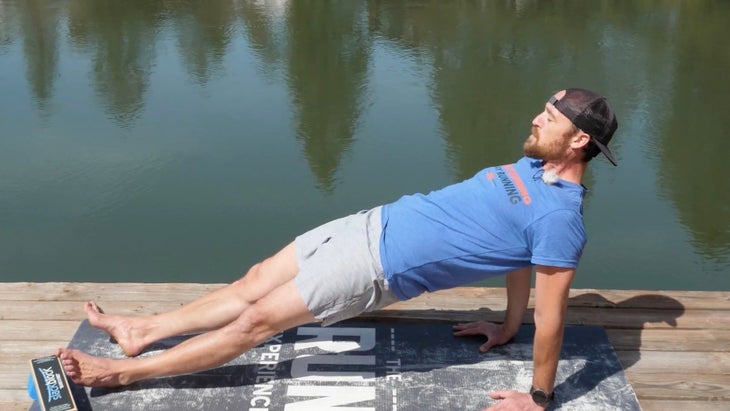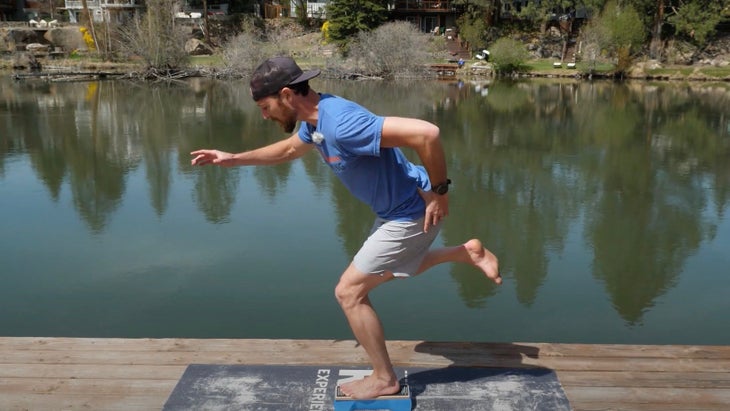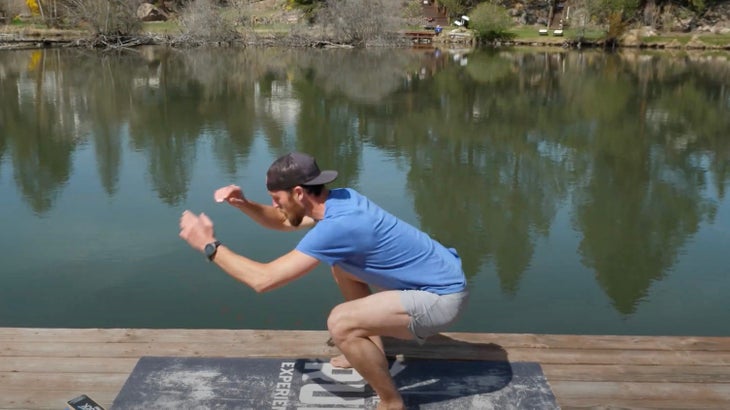New perk! Get after it with local recommendations just for you. Discover nearby events, routes out your door, and hidden gems when you sign up for the Local Running Drop.
There are actually two reasons for weak glutes and I can almost guarantee you are committing one or both of these mistakes, even as you read this article. These mistakes can seriously mess with your swimming, biking, and running, either by leaving power and speed on the table or by opening you up to breakdown and injury.
But to move forward you need to first know the main thing responsible for any and all movement in your body—neuromuscular pathways. Think of these pathways as the communication channels between your brain and the rest of your body, especially your glutes. It’s how your body learns new technically challenging things and becomes more efficient at doing them in the future. The more you practice any skill or movement, the more established these communication channels get, and the easier that skill or movement becomes because the brain gets better at firing that muscle in a certain way at a certain time. Think of the difference between someone learning to play the guitar and your favorite rocker just going at it onstage—like Jack White, he’s one of my favorites. Jack White’s pathways are much more established and automatic than a newbie’s.
But a key piece of information is that you have to be practicing the right movements and the right skills to embed the right efficient motor patterns. Otherwise, you’ll go years embedding ugly patterns and bad habits, becoming really practiced at things that don’t serve you. Which is where a lot of us as triathletes are. Practice doesn’t make perfect, but permanent.
Practice doesn’t make perfect, but permanent.
This will make more sense as we go, and by the end of this article you’ll have a clear picture of the very habits that are undercutting you, and the fairly simple tweaks and exercises you can add to your training and day to day to fix it. So onto reason No. 1.
RELATED: Your Lower-Leg Injuries Could Be Starting at Your Hips
Reason No. 1 for Weak Glutes
You’re not properly activating or using your glutes… at all. Your glutes have two major jobs: to stabilize the hips and extend the hips for power. Due to the charms of 21st-century living, your daily life probably doesn’t sufficiently challenge either. So if you’re not doing any strength work to challenge or improve both hip stability and hip extension on a regular basis then they won’t fire very efficiently to handle the demands of triathlon.
So what activates the glutes? Here are a few of my favorite strength exercises that challenge both stability and extension. You can do them anywhere and add them in either as a pre-workout warm up or in the strength sessions you should be doing too.
Level 1: Reverse planks

Start in an L seat position with your legs straight and feet together. Place your hands next to your hips, fingers forward, and press yourself upwards into a globally extended position. This means you’re both pushing through your upper back and your hips. This is a great way to engage the glutes and hamstrings together in a powerful way. Think of doing 3 sets of 30-second holds.
Level 2: Single leg quarter squats

Start standing on your left foot. Drive your right knee up into a runner position with your abs on and your left glute really (and I mean really) squeezed. This is your start and finish position. To initiate your quarter squat, push the hips back, allowing your chest to drop forward a hair. At this point, both your hip and your knee will have bent so you dropped a few inches. Do NOT let the knee bend forward first. This will make this a quad-dominant movement and put a lot of pressure in the knee. You’ll also be less stable and you won’t feel your glutes firing. Drive those hips back to get the glutes in the game and keep that knee from “swimming” laterally back and forth. Stand on an unstable surface, or hold a dumbbell to add more difficulty. Think of doing 3 sets of 5 to 10 reps per side.
Level 3: Add power and extension with a jump squat jumps or jumping lunges

Both movements really recruit your glutes through the demand of forceful, powerful hip extension. The jump off the ground only happens when the hips extend… violently. Want more recruitment? Either jump higher or hold a dumbbell. Think of doing 3 sets of no more than 5 reps, and rather than do more reps think of jumping even higher. Did I mention you should try jumping higher?
Reason No. 2 for Weak Glutes
You’re sitting and standing in poor positions. Now, we are not supposed be robots that rigidly remain in one position for too long. I’ve heard it said that your best position is the next one. That said, it’s super important that we string together quality positions particularly with regard to the pelvis, because again, what we practice daily (whether we realize it or not) makes permanent, not perfect.
Simply put, pelvic position is king when it comes to glute engagement. And when the pelvis is anteriorly tilted, i.e. dumped forward, all the glute strength exercises in the world won’t matter because the light switch to your glutes will simply be turned off.
Unfortunately, the off switch has become our default because we sit a lot and we stand, either leaning on one leg or with an excessive curve in the low back. To explain, a quick note on your muscles. They like to be the “right” length to be at their strongest and most active. Tight, short muscles aren’t powerful. And lengthened, stretched muscles don’t like to engage. So when you spend a lot of time seated, the front of the hips tighten up, pulling your pelvis forward into an anterior tilt. To make matters worse, this same pelvic tilt lengthens your hamstrings and glutes making them feeling exposed and weak. Fortunately, this can be fixed by focusing on a return to proper pelvic position and with that the natural length and firing of all the key players.
Level your pelvis first by standing evenly with your feet straight and hip-width. Then, squeeze your butt. That’s it. Squeezing your butt aligns your pelvis back to neutral, and it’s why us strength coaches always cue “squeeze your butt” at the top of every squat, while holding planks, and definitely while doing pushups. Because this starts the virtuous cycle of “good” reps and the neuromuscular pathways you care about. Plus, when you inevitably fall out of position, you’re more aware of the change and how quickly get back into it.
So it really boils down to proper engagement with strength and maintaining better hip positions for longer periods of time. If you struggle with your glutes start with these two steps right now. But remember, they have to be done together! If you want more explanation and detail into everything discussed above, including movement breakdowns and demos, please check out this video from The Run Experience Youtube channel.
San Francisco-based Nate Helming co-founded The Run Experience with the goal of reaching a broader audience of runners and outdoor enthusiasts who want to be able to run and enjoy the outdoors and avoid injury. He has helped athletes finish their first races, conquer new distances, overcome pre-existing injuries, set new PRs, reach the podium, and qualify for national and world level events.
